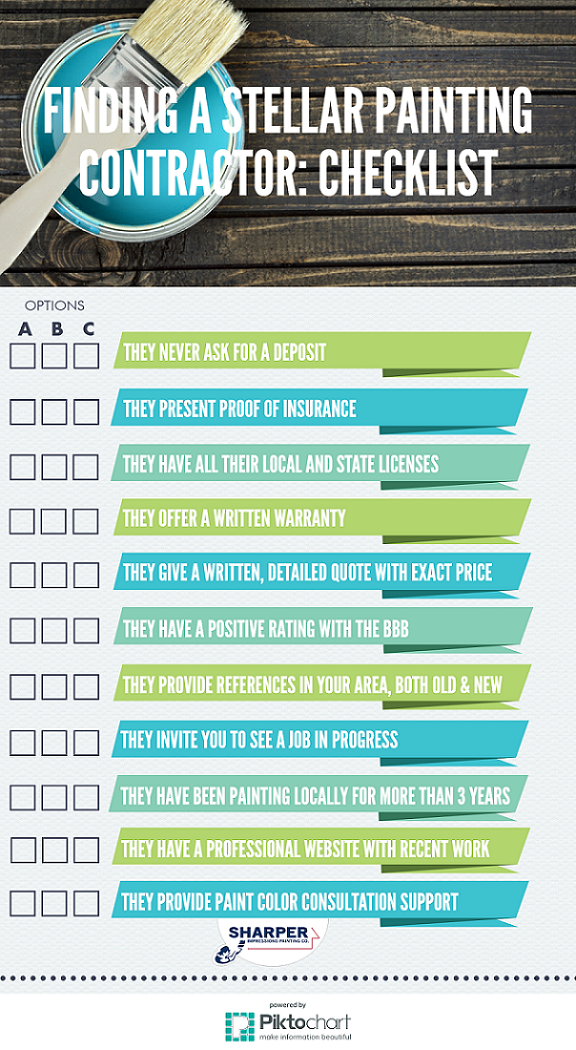Yearning For A Perfect Finish? Discover Just How Weather Variables Can Guide The Success Of Your External Painting Job, Unraveling Crucial Tricks For A Specialist Result
Yearning For A Perfect Finish? Discover Just How Weather Variables Can Guide The Success Of Your External Painting Job, Unraveling Crucial Tricks For A Specialist Result
Blog Article
Write-Up Author-Dejesus Mohammad
Comprehending how weather can influence the end result of an exterior painting endeavor is paramount for achieving a flawless finish. From temperature variations modifying paint attachment to moisture degrees impacting drying times, each aspect of climate plays a substantial duty in the success of your project. Moreover, wind rate and rainfall can introduce unforeseen obstacles that may endanger the high quality of the result. As we navigate through the nuances of weather condition's impact on outside paint, it comes to be evident that precise planning and tactical timing are crucial for ensuring an expert and durable end result.
Ideal Temperature Range for Painting
When thinking about exterior paint tasks, the suitable temperature range plays a vital role in accomplishing optimal outcomes. Paint in the best temperature level problems guarantees that the paint adheres appropriately to the surface area, dries uniformly, and cures properly. Normally, the advised temperature range for exterior painting is between 50 to 85 levels Fahrenheit.
Painting in temperatures listed below 50 degrees Fahrenheit can cause concerns such as poor paint bond, extended drying out times, and a raised chance of fracturing or peeling.
On the other hand, painting in temperature levels above 85 levels Fahrenheit can trigger the paint to completely dry also swiftly, leading to blistering, gurgling, and an uneven coating.
To achieve the very best outcomes, it is necessary to inspect the weather forecast before starting an external paint task. Ideally, goal to repaint throughout mild weather with modest temperatures and reduced moisture levels.
Impacts of Moisture on Paint Drying
Humidity levels substantially impact the drying procedure of paint put on exterior surfaces. best painting company near me can prolong the drying out time of paint, leading to prospective problems such as leaking, streaking, and even the development of bubbles on the painted surface. Excess wetness in the air decreases the evaporation of water from the paint, impeding the curing procedure. https://www.washingtonpost.com/lifestyle/home/diy-painting-advice-experts/2021/02/22/eedd3816-7087-11eb-85fa-e0ccb3660358_story.html is especially problematic for water-based paints, as they rely on evaporation for drying out.
On the other hand, reduced moisture levels can also affect paint drying. Incredibly dry problems might cause the paint to dry too promptly, resulting in poor bond and a rough coating. In such instances, including a paint conditioner or spraying a fine mist of water in the air can help control humidity degrees and improve the paint result.
To make sure ideal drying out conditions, it is recommended to repaint when the humidity levels range in between 40% and 50%.
Monitoring humidity degrees and taking appropriate procedures can aid accomplish a smooth and resilient paint finish on outside surface areas.
Wind and Precipitation Considerations
Wind speed and rainfall are crucial factors that significantly affect the success of an outside paint task.
When it involves wind, both rate and direction are necessary considerations. High wind rates can cause paint to completely dry too rapidly, resulting in a substandard completed with prospective concerns like breaking or unequal texture. Furthermore, wind can carry particles that might stick to the damp paint, resulting in flaws. Therefore, painters need to aim to deal with days with light to modest winds for optimal painting conditions.
On the other hand, rainfall, whether rainfall or snow, can be incredibly damaging to the end result of an external paint job. Wetness from rainfall can prevent paint adhesion, creating peeling and bubbling over time. It is vital to prevent painting throughout wet or snowy weather to ensure the longevity and high quality of the paint task. Painters ought to additionally permit ample time for the surface area to completely dry completely after any type of rainfall prior to starting or returning to the painting procedure.
Conclusion
In conclusion, weather conditions play a significant duty in the outcome of an external painting job. The suitable temperature level range, humidity levels, wind rate, and rainfall all add to the success or failure of the paint job.
It is necessary to take into consideration these variables and strategy accordingly to guarantee proper paint bond, drying times, and total high quality of the ended up item.
